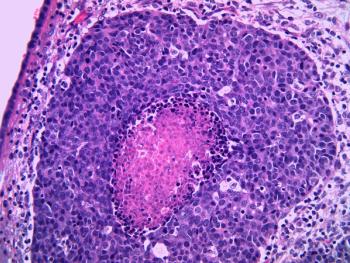
- November 2022
- Volume 88
- Issue 11
November Case Studies- Cough
This issue's OTC Cases answer common questions about a cough.
Case 1: Cough in Pregnancy
Q: ST, a 32-year-old pregnant woman, is asking about OTC medications for a dry cough, headache, nasal congestion, and sore throat. She has been using nonpharmacologic strategies such as a humidifier, saline nasal spray, and Vicks VapoRub. ST has heard that pregnant women should not take ibuprofen for headaches or pseudoephedrine for nasal congestion. She has found some relief for headaches using acetaminophen but wants to know what she can take for the cough. What should the pharmacist recommend?
A: In addition to the humidifier and nasal saline spray, encourage ST to stay hydrated. Cough drops or lozenges can relieve throat irritation from a cough. In terms of antitussive treatment, it is considered safe for pregnant patients to use dextromethorphan for a dry cough. Although dextromethorphan has a wide margin of safety, it is available OTC as a single ingredient and in combination with active ingredients acetaminophen, antihistamines, decongestants, and guaifenesin. The use of dextromethorphan (antitussive) and guaifenesin (protussive) is counteractive, as each ingredient is working to achieve opposite outcomes. Pregnant patients should avoid decongestants such as pseudoephedrine. Likewise, some antitussive cough syrups are made with alcohol, which should be avoided during pregnancy. If nonpharmacologic measures do not relieve her cough and ST experiences a nocturnal cough, she should use single-ingredient dextromethorphan without alcohol.1
Case 2: Productive Cough
Q: RN is a 67-year-old man who has questions about self-care for a chesty, wet cough he has been experiencing for the past week. He tried dextromethorphan (Delsym) but did not experience relief. RN describes the mucous as viscous, yellow, and difficult to expel. He has not had a fever. RN asks for advice on how to treat the productive cough. What should the pharmacist recommend?
A: A productive cough can be useful in clearing secretions from the respiratory tract. When RN is unable to evacuate the secretions, this can lead to reduced ventilation of the lungs and impair the ability to resist respiratory infections. The drug he tried is an antitussive and would work against the action of expelling the respiratory secretions. Instead, advise RN to use a protussive or expectorant agent such as guaifenesin (Mucinex). This agent should not be used for chronic cough associated with asthma, chronic obstructive pulmonary disease, or emphysema.2,3
Case 3: Topical Antitussives
Guaifenesin works by loosening the mucous and makes the viscous and difficult-to-evacuate mucous more productive and therefore easier to expel. This medication is generally well tolerated and is not associated with many drug interactions. In addition to guaifenesin use, encourage RN to drink plenty of water to loosen mucous and maintain hydration. Likewise, advise RN to use humidifiers to increase the moisture in the air to soothe an irritated throat and respiratory tract.2,3
Q: AG is a 35-year-old woman with questions about topical antitussives. She is overwhelmed by the number of choices and varieties of formulations and ingredients. AG is recovering from a cold and has a residual mild dry cough that has been bothersome during the day. She is seeking advice about topical antitussives. What information can the pharmacist share?
A: Of the topical antitussives available OTC, the only FDA-approved ingredients are camphor and menthol. Although the exact mechanism of action and objective efficacy of camphor and menthol are lacking, there are theoretical explanations for how they work. Inhaled camphor and menthol stimulate sensory neurons to create an anesthetic sensation and a feeling of improved respiratory airflow. Likewise, sensitivty to the cough reflex may be suppressed, leading to a decreased cough. Although generally well tolerated, adverse effects include a burning or irritation sensation of the eyes, nose, or skin upon application. The lethal oral dose of camphor and menthol in adults is 4 g/kg.3-5
Both camphor and menthol are available topically and should be applied to the chest and throat. Advise AG to repeat application as needed up to a maximum of 3 times per day. Instruct her to loosen the clothing around her chest and throat to allow the camphor and menthol vapors to reach her mouth and nose. Advise AG to avoid application in the nostrils, on damaged skin, under the nose or mouth, or with tight bandages.6
Menthol lozenges are also available in 5- to 10-mg doses. Advise AG to avoid chewing the lozenge and instead allow it to dissolve slowly in her mouth, repeating the dose every hour or as needed.6
Case 4: Honey
Q: PR is a 40-year-old woman who is asking about using honey to treat a cough. She says she has steered away from giving honey to her children because her obstetrician gynecologist informed her of the risks to infants. PR asks about the clinical data regarding the use of honey to treat a cough in children. What information should the pharmacist share?
A: Although honey is a common home remedy, ingestion should be avoided in children aged younger than 1 year because of an increased risk of botulism from honey that may be contaminated with Clostridium botulinum. Several studies have been conducted to assess the efficacy of honey in children with a cough.7
One systematic study included randomized controlled trials comparing honey with dextromethorphan for reducing the frequency of a cough. Although the included trials were judged to be at high risk of bias, there was generally no difference in cough frequency between the dextromethorphan and honey treatment groups.8
Another study compared the use of honey with diphenhydramine for cough in children. Investigators found that honey may be better than diphenhydramine in reducing cough and severity of the cough. Likewise, the results of 2 additional studies comparing honey with a placebo showed that honey may be better than the placebo in reducing cough frequency and severity in children.9
Given the above information, the CHEST Expert Panel suggests that honey may offer decreased frequency and severity of cough symptoms compared with diphenhydramine or no treatment in children aged older than 1 year who suffer from cough related to the common cold. However, the panel noted that honey is not better than dextromethorphan for a cough. Of note, dextromethorphan cannot be used in children younger than 2 years.9
References
- Einarson A, Lyszkiewicz D, Koren G. The safety of dextromethorphan in pregnancy: results of a controlled study. Chest. 2001;119(2):466-469. doi:10.1378/chest.119.2.466
- Short S, Bashir H, Marshall P, et al. Diagnosis and treatment of respiratory illness in children and adults. Institute for Clinical Systems Improvement. September 2017. Accessed October 15, 2022.
https://www.icsi.org/wp-content/uploads/2019/01/RespIllness.pdf - Food and Drug Administration, HHS. Cold, cough, allergy, bronchodilator, and antiasthmatic drug products for over-the-counter human use; final monograph for combination drug products. Final rule. Fed Regist. 2002;67(246):78158-72.
- Wise PM, Breslin PA, Dalton P. Sweet taste and menthol increase cough reflex thresholds. Pulm Pharmacol Ther. 2012;25(3):236-241. doi:10.1016/j.pupt.2012.03.005
- Santos CD, Cabot JC. Persistent effects after camphor ingestion: a case report and literature review. J Emerg Med.2015;48(3):298-304. doi:10.1016/j.jemermed.2014.05.015
- Smith SM, Schroeder K, Fahey T. Over-the-counter (OTC) medications for acute cough in children and adults in community settings. Cochrane Database Syst Rev. 2014;2014(11):CD001831. doi:10.1002/14651858.CD001831.pub5
- Oduwole O, Udoh EE, Oyo-Ita A, Meremikwu MM. Honey for acute cough in children. Cochrane Database Syst Rev. 2018;4(4):CD007094. doi:10.1002/14651858.CD007094.pub5
- Paul IM, Beiler J, McMonagle A, Shaffer ML, Duda L, Berlin CM Jr. Effect of honey, dextromethorphan, and no treatment on nocturnal cough and sleep quality for coughing children and their parents. Arch Pediatr Adolesc Med. 2007;161(12):1140-1146. doi:10.1001/archpedi.161.12.1140
- Malesker MA, Callahan-Lyon P, Ireland B, Irwin RS; CHEST Expert Cough Panel. Pharmacologic and nonpharmacologic treatment for acute cough associated with the common cold: CHEST Expert Panel Report. Chest. 2017;152(5):1021-1037. doi:10.1016/j.chest.2017.08.009
About the Authors
Rupal Patel Mansukhani, PharmD, FAPHA, CTTS, is a clinical associate professor at Ernest Mario School of Pharmacy at Rutgers, The State University of New Jersey in Piscataway, and a transitions-of-care clinical pharmacist at Morristown Medical Center in New Jersey.
Ammie Patel, PharmD, BCACP, is a clinical assistant professor of pharmacy practice and administration at Ernest Mario School of Pharmacy at Rutgers, The State University of New Jersey in Piscataway, and an ambulatory care specialist at RWJBarnabas Health Primary Care in Shrewsbury and Eatontown, New Jersey.
Articles in this issue
almost 3 years ago
Interactive Case Studies: November 2022 Issuealmost 3 years ago
Preparing for the 2022, 2023 Cold, Flu Seasonalmost 3 years ago
OTC Product News: Novemberalmost 3 years ago
How Long Does Flu Shot Protection Last?almost 3 years ago
November Pet Peevesalmost 3 years ago
Perform Drug-Drug Interaction Assessments at Every Visitalmost 3 years ago
Low Rates of Flu, Pneumococcal Vaccine Raise Concerns for Expertsalmost 3 years ago
Rx Product News: Novemberalmost 3 years ago
Kidney Damage From Diabetes Worsens Over Timealmost 3 years ago
Vtama Cream From Dermavant SciencesNewsletter
Stay informed on drug updates, treatment guidelines, and pharmacy practice trends—subscribe to Pharmacy Times for weekly clinical insights.


















































































































































































































